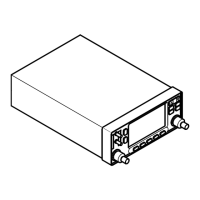Cirrus Design Section 4
SR22T Normal Procedures
P/N 13772-005 4-17P/N 13772-005 4-17
Amplification
The fuel pump should be in the BOOST position during takeoff and for
climb as required for vapor suppression with hot or warm fuel.
Takeoff Power C heck
Check full-throttle engine operation early in takeoff run. The engine
should run smoothly and turn approximately 2500 RPM. All engine
parameters are not in caution or warning ranges. Discontinue takeoff
at any sign of rough operation or sluggish acceleration. Make a
thorough full-throttle static run-up before attempting another takeoff.
Manifold pressure may temporarily increase to 36.0 - 37.0 in.Hg on
first flight of the day due to cooler oil temperatures and associated
higher oil pressures. This is acceptable under these conditions but
normal full throttle manifold pressure should be 36.0 in.Hg. The fuel
flow will normally also increase in proportion to the increase in
manifold pressure. If manifold pressure exceeds 37.0 in.Hg on takeoff
or during full power climbs, reduce power to maintain no more than
37.0 in.Hg.
For takeoff over a gravel surface, advance Power Lever slowly. This
allows the airplane to start rolling before high RPM is developed, and
gravel will be blown behind the propeller rather than pulled into it.
Takeof f Flap Set tings
Normal and short field takeoffs are accomplished with flaps set at
50%. Takeoffs using 0% are permissible, however, no performance
data is available for takeoffs in the flaps up configuration. Takeoffs with
100% flaps are not approved.
Soft or rough field takeoffs are performed with 50% flaps by lifting the
airplane off the ground as soon as practical in a tail-low attitude. If no
obstacles are ahead, the airplane should be leveled off immediately to
accelerate to a higher climb speed.
Takeoffs into strong crosswinds are normally performed with the flaps
set at 50% to minimize the drift angle immediately after takeoff. With
the ailerons fully deflected into the wind, accelerate the airplane to a
speed slightly higher than normal while decreasing the aileron
deflection as speed increases then - with authority - rotate to prevent
possibly settling back to the runway while drifting. When clear of the
ground, make a coordinated turn into the wind to correct for drift.
Original Issue

